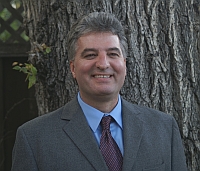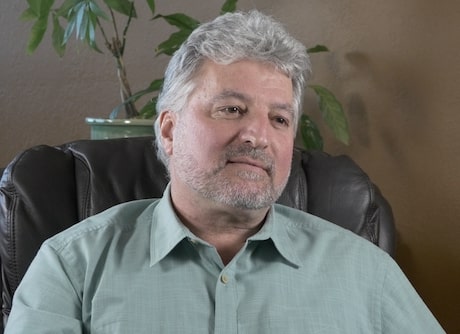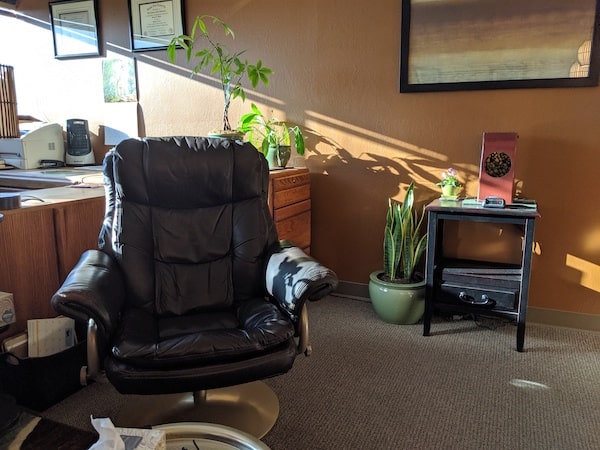My Bio
Biographical sketches tend to be boring, so I’m being original here and hopefully not boring. I was born and raised in CanYouAffordItia (California) where I did most of my therapy training and growth, including, as of 2023, about 25 years of personal therapy looking at me since 1984; a few of those years were 2 sessions a week. I moved to New Mexico after completion of #9 below.

- I started in this field quite young. I was frequently counseling others, be it the poor guy that was teased at school (whom I made friends with), or later, my friends who broke up with a girlfriend. Being marginalized as a child, and understanding the pain being bullied caused, I gravitated toward being supportive and protective of marginalized people.
Lesson: Listening is powerful medicine. - I tried working with kindergartners and first graders in daycare while I was working on my AA college degree. That was too chaotic, and I didn’t last long doing it.
Lesson: Daycare providers don’t get paid nearly enough for what they do (teachers too). - I volunteered for a “Big Brother” program called Operation Getting It Together and spent a year being a mentor and friend to a 9-year old boy. He lived in the poorest and most violent situation I’ve ever seen.
Lesson: When you think things are bad, there’s always someone who has it worse. - Feeling anxious about how to deal with psychosis and suicide, I decided to intern at an inpatient
 psychiatric facility for 2 years, in Sonoma County at Oakcrest. I did see a lot of psychosis and suicide attempts–and a lot of other things. I learned first-hand about psychotropic medication and its benefits and side effects. One evening, while working the night shift, I saved a woman from taking her own life.
psychiatric facility for 2 years, in Sonoma County at Oakcrest. I did see a lot of psychosis and suicide attempts–and a lot of other things. I learned first-hand about psychotropic medication and its benefits and side effects. One evening, while working the night shift, I saved a woman from taking her own life.
Lesson: Is saving a life always the right thing? She had already tried more than 20 times to end hers… - In order to see what clients looked like after their hospital stay, I spent another year with the same population, only this time it was outpatient, across the street. I also worked with sex-offenders at that point and it sent me toward writing my Master’s thesis about sex-offender treatment.
Lesson: a) People can fully recover after being in the psychiatric unit. b) In spite of all the issues around it, there must be therapists willing to work with sex-offenders. - Realizing I also needed to know about this thing called chemical dependency/addiction/recovery, I worked in outpatient substance abuse treatment for a few years at Sonoma County Alcohol Services.
Lesson: The twelve-step program developed in Alcoholics Anonymous (A.A.) works really well for a lot of people. There is a twelve-step, recovery program for almost everything at this point, not just alcohol. It gives people a sense of “Identity, Purpose and Direction” (thanks Fred Moore, Ed.D.). - Back to children, only this time, as a family therapist in an elementary school, in Petaluma California, for 2 years.
Lesson: Family therapy can often be more effective than individual therapy. It can really hurt a child to label them as the problem, when the problem is systemic in the family (that was how Systemic Family Therapy was created). - Wrapping up my Master’s degree in Marriage Family and Child Counseling, I decided to try therapy in a private practice setting as an intern and that was very empowering.
Lesson: Private practice can be very isolating. Those that do it would do well to be part of a consultation/support group with other therapists. Something I continue with today. - Since I moved to San Rafael, I went to work at the famous Ross Hospital (it was actually in Kentfield, next to Ross. Go figure…). There I learned everything you would NEVER want to know about urine drug-screening; including being certified to test urine samples, and how you could get false positives for opiates after eating some poppy-seed bagels. That was back when the limit was set to 300 ng/ml (nanograms per milliliter, for anyone who cares). Many tests are now as high (pun intended) as 4,000 ng/ml, to avoid testing positive from seeds. And, by the way, you are supposed to pronounce both R’s in barbiturate. Anyway, my clients were mostly physicians and nurses who had taken medication from the workplace to fund their addiction. I became licensed as a Marriage Family and Child Counselor (MFCC) while there. Cutbacks in the substance abuse field began, so I decided to cash out and move to New Mexico.
Lesson: Spending 12 years getting licensed in California and then leaving the state might not be the smartest career move… - I spent some time on sabbatical in New Mexico where I learned to chop wood (literally), and live in snow, and just be. While in New Mexico I:
– began seeing clients in private-practice again.
– ran anger management groups for the Town of Taos.
– coordinated the AA degree in Human Services Program for the University of New Mexico. While I coordinated the program, I taught courses, including: Field Placement Supervision, Techniques of Assessment and Intervention, Family Therapy, and Principles of Interviewing.
– worked with the Eight Northern Indian Pueblo Council (ENIPC), providing domestic violence treatment and stress management for police officers (they doubled as SWAT team members and saw a lot of trauma).
Lesson: I was doing good work as a therapist and my practice grew quickly because I was taking excellent care of myself. Self-care is important if a therapist going to provide quality service. - I was homesick, so back to California, this time working for the famous St. Helena Hospital in a partial psychiatric hospitalization program. Our team scored a perfect 100% on a JCAHO site review (for those in the know, that’s near impossible, but we did it).
Lesson: I am a detail-oriented person. - Next, was managing a 12-bed residential living-facility for people with brain injury. It was not very fulfilling, and was very difficult, because I wasn’t seeing change. I see myself as a change-agent.
Lesson: For some therapists (like me), working with those that can’t change is often too difficult. - I finally landed and spent almost 4 years doing one thing! I was the Counseling Department Director for the Indian Health Center of Santa Clara Valley (IHC) in San José, where I was blessed with the greatest staff.
Lesson: I am meant to be in private practice and speak and write and take good care of myself.
- So, my last move was to build my therapy practice again and write. To do that, I needed to go part-time with the IHC. I moved over to Director of Development and Projects, where I wrote grants and handled detail-oriented work to further support the IHC.
Lesson: Wait long enough and you will find your calling. Focus hard enough and it will happen sooner rather than later. - Stopped working at the IHC, and since 2003, have worked only for myself as a full-time therapist.
- Served as President of the Board of the Santa Clara Valley Chapter of the California Association of Marriage and Family Therapists (SCV-CAMFT) from 2006-2007, and as Past President during 2008.
- Co-founded Bay Area Psychotherapy Associates (BAPA) with Judith McFarland, MFT and Bea Armstrong, MFT, where my office still resides in Campbell.
- From 2006-2019 I supported The Couples Institute by serving as an associate, continuing the work of Drs. Ellyn Bader and Peter Pearson, founders of The Couples Institute. They are recognized worldwide for their pioneering work in couples’ therapy and therapist training. It was an honor working with them.
- Reading, writing, evolving…
- I am seeing people in-person post vaccinations… Zoom is still available as well.
